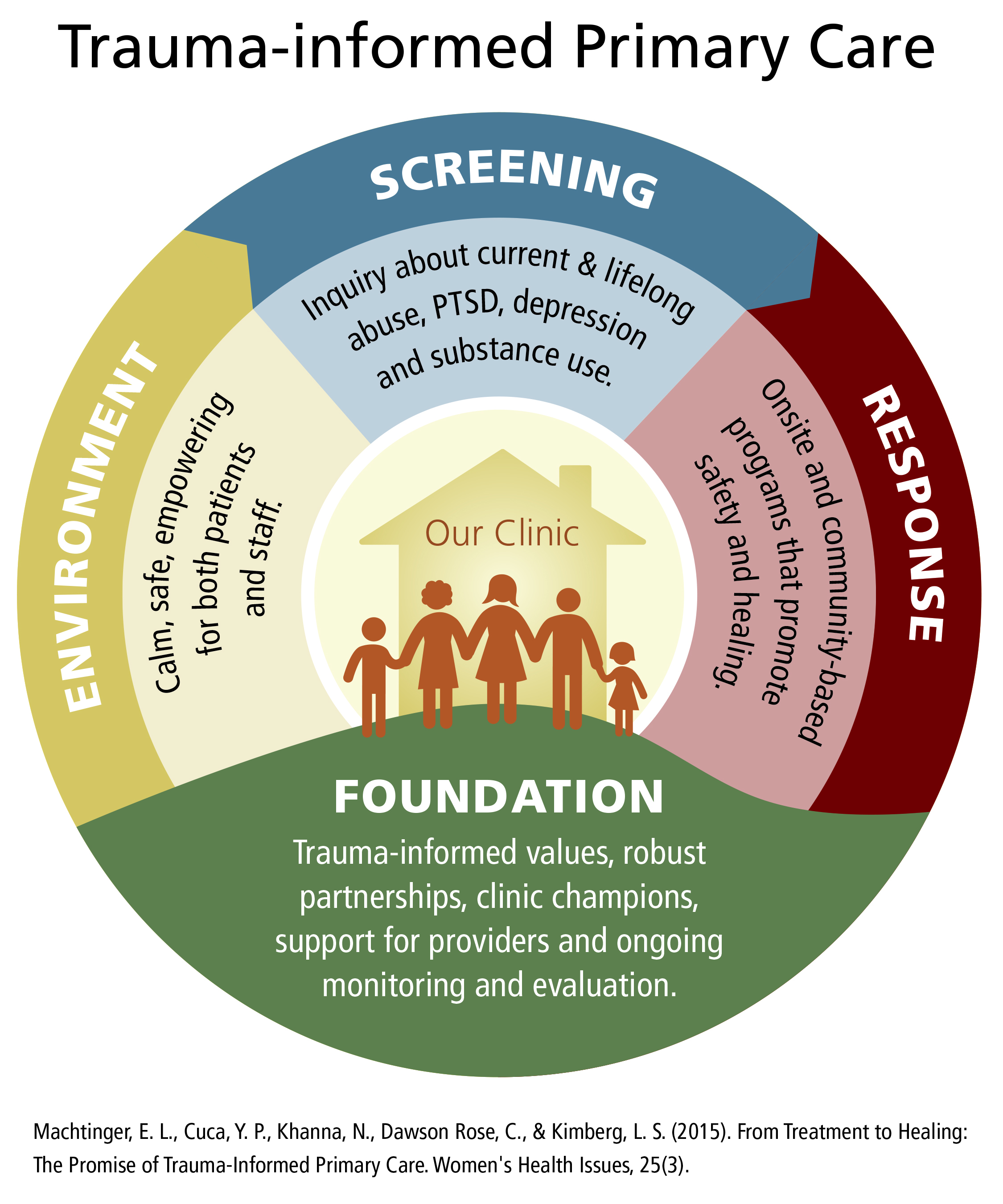In our latest website survey, Amanda A. asked: “How much do front-line service providers know about trauma-informed care? Is trauma-informed care taken into consideration when developing policies, especially for youth?”
Trauma plays a significant role in both the pathways to homelessness and the experience of homelessness itself, so the importance of trauma-informed care (TIC) can’t be overstated. But before I go deeper in answering this question, let’s explore what TIC is in the first place.
TIC is a somewhat flexible term that hasn’t always had a static meaning. SAMSHA describes TIC (or in the organization’s terms, “trauma-informed approach”) as an approach that:
- Realizes the widespread impact of trauma and understands potential paths for recovery;
- Recognizes the signs and symptoms of trauma in clients, families, staff, and others involved with the system;
- Responds by fully integrating knowledge about trauma into policies, procedures, and practices; and
- Seeks to actively resist re-traumatization.”
Hopper, Bassuk and Olivet (2010) reviewed the existing research on TIC and created a consensus-based definition that conveys common themes and practices:
…a strengths-based framework that is grounded in an understanding of and responsiveness to the impact of trauma, that emphasizes physical, psychological, and emotional safety for both providers and survivors, and that creates opportunities for survivors to rebuild a sense of control and empowerment.
The authors also differentiate between trauma-informed services (TSS) and TIC, writing that TSS “are specific treatments for mental disorders resulting from trauma exposure, while TIC is an overarching framework that emphasizes the impact of trauma and that guides the general organization and behavior of an entire system” (p. 81). In other words, TIC is an approach established at the agency/organizational level that shapes policies and practices.
The importance of TIC
I have no answer about how much frontline workers know about TIC – it simply depends on each worker and where they practice. There have not been any large or rigorous studies about how many frontline workers or agencies/organizations provide TIC, but the movement to make services trauma-informed has been growing for many years.
Trauma is a major factor in the lives of a great many people, as well as those who experience homelessness. As the authors of the National Center for Family Homelessness’ Trauma-Informed Organizational Toolkit write:
The prevalence of traumatic stress in the lives of families experiencing homelessness is extraordinarily high. Often these families have experienced on-going trauma throughout their lives in the form of childhood abuse and neglect, domestic violence, community violence, and the trauma associated with poverty and the loss of home, safety and sense of security. These experiences have a significant impact on how people think, feel, behave, relate to others, and cope with future experiences.
Trauma can affect anyone – not just families – and is a “common experience among homeless youth prior to homelessness” (Martiljin & Sharpe, 2006). Youth are particularly vulnerable as they are often forced to leave their homes due to violence, conflict and/or bigotry and do not have the supports necessary to live independently. Many youth agencies in the United States have used TIC to reduce the symptoms of diagnosed post-traumatic stress disorder (PTSD), with one participant stating: “This was the first time I felt safe” after receiving care.
McKenzie-Mohr, Coates and McLeod (2012) called for a politicized understanding of trauma in meeting the needs of youth experiencing homelessness and challenge our use of PTSD diagnoses, writing:
While diagnostic labeling of distress and the disregard of context locate the difficulty within the individual, a radicalized notion of trauma puts forward a necessary alternative to the overly narrow PTSD classification. Drawing upon a broadened and contextualized lens to explore distress, the daily experiences of living in a classist, racist, patriarchal and heterosexist society are taken into account…
Indeed, the use of PTSD diagnoses often overlooks the contexts through which youth (and others) experience trauma, and assumes the world is generally safe and not harmful. For many youth in this situation, it is anything but – thus confirming the need for TIC implemented in politicized ways.
Challenges of implementing TIC
Unfortunately, many services for people experiencing homelessness do not take trauma into account. There are many challenges involved in implementing TIC. As Barrow, McMullin, Tripp and Tsemberis not: “Change, especially within larger systems, can be time-consuming and requires a great deal of commitment across all levels of an organization.” Other issues were highlighted by Moses et al. (2003) in their study, including:
…philosophical differences between mental health and substance use treatment approaches, differences around issues of trauma, resistance at the service and administrative levels, limited resources, difficulties in achieving consistent participation in trauma groups, staff turnover, and the difficulty of change in general.
Furthermore, as Fallot and Harris (2009) note, trauma “has often occurred in the service context itself. Involuntary and physically coercive practices, as well as other activities that trigger trauma-related reactions, are still too common in our centers of help and care.” When services created to help people end up harming them, it is clear that we need to take a radically different approach.
More resources about TIC
Trauma-informed practice guide (BC Provincial Mental Health and Substance Use Planning Council, 2013)
10 tips for recovery-oriented, trauma-informed agencies (Center for Mental Health Services, Substance Abuse and Mental Health Services, 2009)
10 reasons for incorporating trauma-informed approaches in programs for runaway and homeless youth (Hollywood Homeless Youth Partnership, 2009)
8 tips for becoming trauma-informed in practice (SAMHSA, 2011)
Trauma-informed care 101 (SAMHSA, 2009)
This post is part of our Friday "Ask the Hub" blog series. Have a homeless-related question you want answered? E-mail us at thehub@edu.yorku.ca and we will provide a research-based answer.
Photo credit: WHP Women's HIV Program


